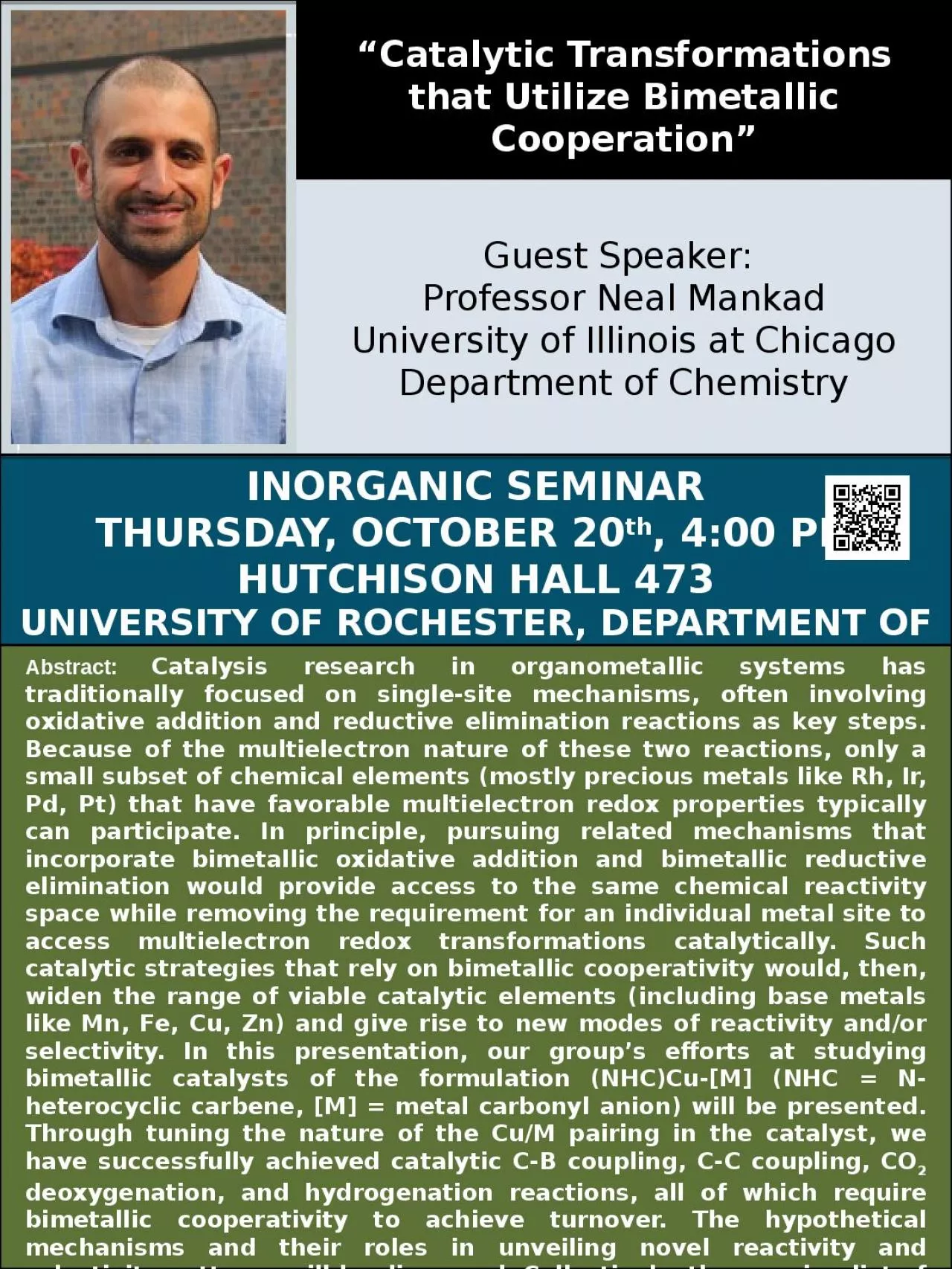

th 400 PM HUTCHISON HALL 473 UNIVERSITY OF ROCHESTER DEPARTMENT OF CHEMISTRY ORGANIC SEMINAR Friday January 15 th 2016 900 a University of Rochester Catalytic Transformations that Utilize Bimetallic Cooperation ID: 1041926
Download Presentation The PPT/PDF document "INORGANIC SEMINAR THURSDAY, OCTOBER 20" is the property of its rightful owner. Permission is granted to download and print the materials on this web site for personal, non-commercial use only, and to display it on your personal computer provided you do not modify the materials and that you retain all copyright notices contained in the materials. By downloading content from our website, you accept the terms of this agreement.
1. INORGANIC SEMINARTHURSDAY, OCTOBER 20th, 4:00 PMHUTCHISON HALL 473UNIVERSITY OF ROCHESTER, DEPARTMENT OF CHEMISTRYORGANIC SEMINARFriday, January 15th, 20169:00 a.University of Rochester“Catalytic Transformations that Utilize Bimetallic Cooperation”Guest Speaker: Professor Neal MankadUniversity of Illinois at ChicagoDepartment of ChemistryAbstract: Catalysis research in organometallic systems has traditionally focused on single-site mechanisms, often involving oxidative addition and reductive elimination reactions as key steps. Because of the multielectron nature of these two reactions, only a small subset of chemical elements (mostly precious metals like Rh, Ir, Pd, Pt) that have favorable multielectron redox properties typically can participate. In principle, pursuing related mechanisms that incorporate bimetallic oxidative addition and bimetallic reductive elimination would provide access to the same chemical reactivity space while removing the requirement for an individual metal site to access multielectron redox transformations catalytically. Such catalytic strategies that rely on bimetallic cooperativity would, then, widen the range of viable catalytic elements (including base metals like Mn, Fe, Cu, Zn) and give rise to new modes of reactivity and/or selectivity. In this presentation, our group’s efforts at studying bimetallic catalysts of the formulation (NHC)Cu-[M] (NHC = N-heterocyclic carbene, [M] = metal carbonyl anion) will be presented. Through tuning the nature of the Cu/M pairing in the catalyst, we have successfully achieved catalytic C-B coupling, C-C coupling, CO2 deoxygenation, and hydrogenation reactions, all of which require bimetallic cooperativity to achieve turnover. The hypothetical mechanisms and their roles in unveiling novel reactivity and selectivity patterns will be discussed. Collectively, the growing list of catalytic transformations available to this single bimetallic catalyst design mimics the behavior of familiar single-site precious metal systems and provides support to the bimetallic hypothesis as a promising paradigm in homogeneous catalysis.Host: Professor Ellen Matson, email: matson@chem.rochester.edu